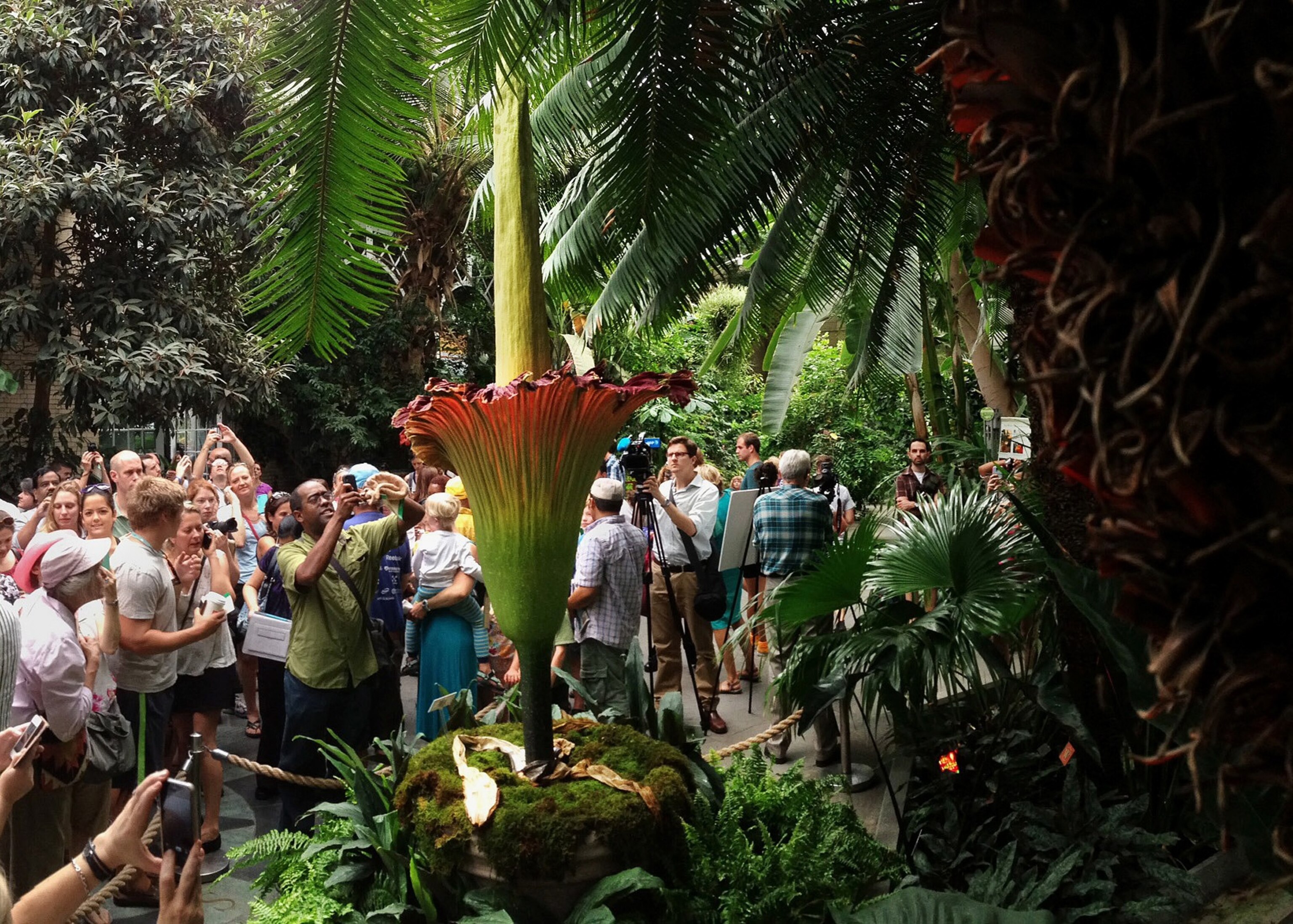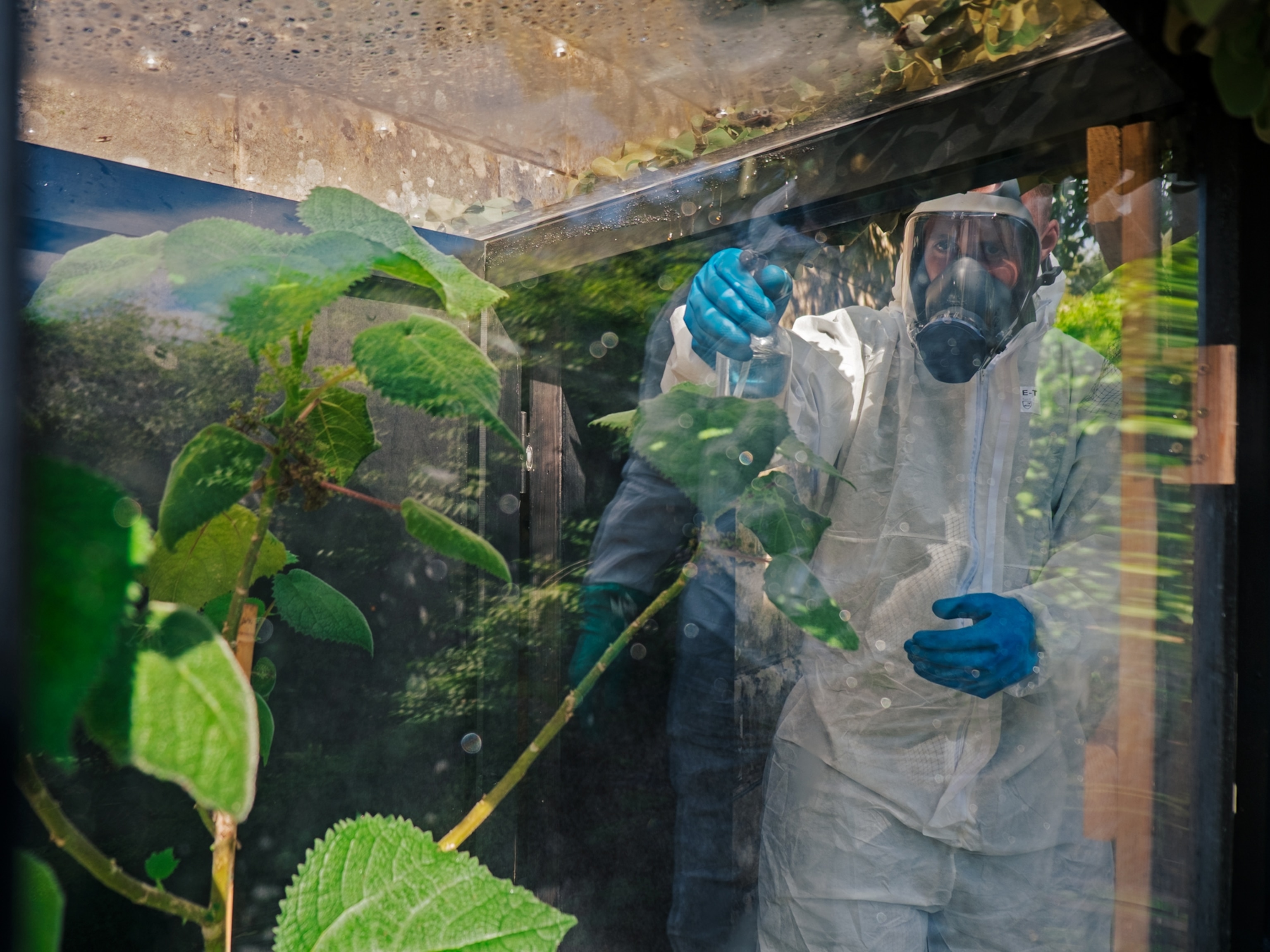
World’s Stinkiest Flower Finally Blooms
After a week of anticipation, the titan arum opened on Sunday.
On a typical day at the U.S. Botanic Garden it's very easy to stop and smell the roses. On Monday, however, the line to enter wrapped around the corner and halfway down the block. Floral fanatics and curious office workers alike came to see Washington, D.C.'s most famous plant: an 8-foot-tall (2.4-meter-tall) corpse flower named Andy who was supposed to smell like a dead body.
Andy, short for "androgynous," is a titan arum corpse flower who is native to parts of Indonesia. It was brought to the U.S. Botanic Garden in anticipation of its landmark bloom, which only takes place every eight to ten years.
In addition to being unpredictable, the bloom is heralded for its unique smell, which resembles rotting flesh, a dirty diaper, or fermenting vegetables—depending on whom you ask. The rank stench is even more of an attraction because it only lasts less than half a day after the flower blooms.
This unique odor is what drew crowds to the glass building, not far from the U.S. Capitol. Unfortunately, Andy had terrible timing—its hours of stench occurred while the garden was closed, with nobody to witness except a few employees.
"I'm sorry I missed out on the aroma," said George Mika of Lyndon, Virginia, who drove 70 miles (113 kilometers) to take a whiff. Like many others, Mika had anticipated the stench of a lifetime, but was met instead with nothing more than the faint body odor of sweaty humans in a hot greenhouse.
The Final Chapter
Andy is seven years old, but has only risen to prominence in the past few weeks. Clocking in at 250 pounds (113 kilograms), it was rolled into the Botanic Garden earlier this month in anticipation of its bloom.
But predicting the bloom of a rare, giant flower is not an exact science. (See also: "'Stubborn' Corpse Flower Still Hasn't Bloomed.") For over a week, the Botanic Garden held extended hours and broadcast a live webcast of Andy to no avail; the stinker didn't open until several days past the original prediction.
"It's like D.C.'s version of the royal baby watch," said Denise Sylvester, a Department of Agriculture worker who stopped by with two friends during their lunch break. She had been checking the livestream for several days and stopping by the garden in hopes of catching Andy in all of its stinking glory.
"It's not very pungent," she said as she stood ten feet (three meters) from the corpse flower.
"There's two very unique things about this flower: its size and its smell," said her co-worker Renee Mann. "I feel like we've only experienced half of the unusualness."
But this wasn't such a bad thing for many who visited.
"I wouldn't come to something just for the bad smell," said Darlene Pierro of Rockville, Maryland. "I think people who understand how rare and marvelous this plant is appreciate it."
Others agree.
"It's an event," said Rosemary TenEyck, who works a few blocks away. "When you have something that only happens every couple of years or decade—if you have an opportunity to see it—it's what you should do."
Follow Lara Sorokanich and Melody Kramer on Twitter.




